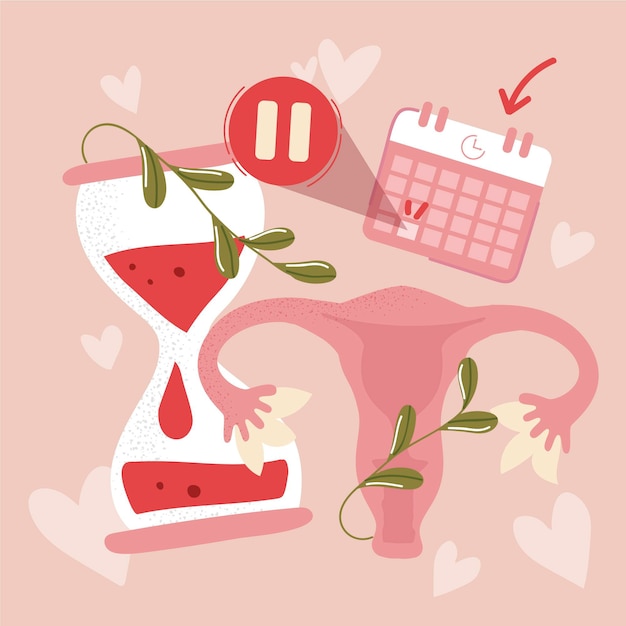
Brown discharge from the vagina is a common occurrence and is usually not a cause for concern. Many women notice this brownish color at the end of their period, but it can also happen at other times. While it’s natural to wonder about the reasons behind this, in most cases, it’s just a normal part of your body’s functioning. However, it’s good to know what might be causing it to understand when it’s a harmless occurrence and when it might require medical attention.
### What Is Brown Discharge?
Brown discharge typically refers to light vaginal spotting or bleeding with a brownish tint. This happens because older blood, which wasn’t expelled during your last period, oxidizes, giving it a brown color instead of bright red. It might occur just before your period starts, at the end of your period, or even between cycles.
### Is It Normal?
In most cases, brown discharge is entirely normal and can happen for several reasons, such as a delayed period, ovulation, or implantation. When your period is late, the leftover blood from your last cycle might be seen as a brown discharge before your body begins expelling fresh blood. Similarly, during ovulation, some women may experience light spotting in a brownish shade. Implantation bleeding, which occurs when a fertilized egg attaches to the uterus wall, can also result in this type of discharge—often as an early sign of pregnancy.
### When Should You Be Concerned?
While brown discharge is usually no cause for alarm, there are instances where it could signal a more serious health issue, such as an infection, pelvic inflammatory disease (PID), or, in rare cases, something as severe as cervical cancer. If you notice brown discharge accompanied by severe abdominal pain, pelvic pain, nausea, or weakness, it’s essential to contact a gynecologist promptly. These additional symptoms may indicate an underlying condition that requires medical attention.
### Common Reasons for Brown Discharge
Brown vaginal discharge can happen at various points in a woman’s life due to several factors. Below are some common causes:
#### 1. Pre-Menopause
During the transition to menopause (often called pre-menopause), irregular periods and hormonal changes are common. This can lead to brown discharge instead of regular menstrual blood. For most women, pre-menopause occurs between the ages of 40 and 55, though it can start earlier in rare cases. The decrease in estrogen during this phase often results in irregular cycles, including periods where only old blood (brown discharge) is shed.
#### 2. Delayed Periods
When your period is late, the body may release leftover tissue and blood from the previous cycle, causing a brownish discharge before fresh bleeding begins. This is a natural process and usually isn’t something to worry about.
#### 3. Birth Control
Certain birth control methods, like hormonal pills or implants, can affect your body’s natural hormonal levels and cause irregular spotting, including brown discharge. Some women notice this even when taking birth control pills for non-contraceptive purposes, such as acne treatment. Your body often needs time to adjust to these hormonal changes, and during that time, you might experience brown discharge instead of a regular period.
#### 4. Implantation Bleeding
If you’re sexually active and trying to conceive, brown discharge could be an early sign of pregnancy. This typically occurs when a fertilized egg attaches to the uterine lining. While not every woman experiences implantation bleeding, those who do often see a brownish spotting that goes away on its own.
#### 5. Pelvic Inflammatory Disease (PID)
PID, a serious health condition caused by untreated bacterial infections, can damage the reproductive organs. Symptoms of PID include brown discharge, pelvic pain, infertility, and other signs of infection. If you suspect PID, it’s crucial to seek medical attention as soon as possible to avoid lasting health complications.
#### 6. Hormonal Imbalance
Factors like stress, polycystic ovary syndrome (PCOS), or changes in your hormone levels due to medications can lead to brown discharge. About 25% of cases involve hormonal imbalances as the underlying cause. Hormones play a major role in regulating your menstrual cycle; when they’re off, spotting or discharges can occur.
#### 7. More Severe Health Conditions
In rare cases, brown discharge can indicate more serious health problems, such as chlamydia, gonorrhea, or cervical cancer. If your discharge is heavy, has an unusual smell, or is accompanied by other symptoms like itching, dryness, burning, or pain during sex, don’t wait—schedule a visit with your gynecologist.
### How to Manage or Prevent Brown Discharge
If your brown discharge isn’t due to a serious condition, maintaining good vaginal health can help manage or prevent it. Here are some tips:
– Avoid using sprays or scented products around your vaginal area, as they can cause irritation or lead to infections.
– Always practice good hygiene by changing sanitary napkins or tampons regularly during your period.
– Wear breathable, cotton underwear, and avoid tight-fitting fabrics to reduce the risk of irritation.
– Refrain from inserting foreign objects into the vagina unless under a medical professional’s guidance.
– Follow your doctor’s advice if you’re using medication or recovering from a cervical procedure.
### When to Seek Help
A little brown spotting here and there is usually nothing to worry about. It’s common after periods or during certain phases like pregnancy or hormonal changes. If, however, you notice any of the following, seek medical attention:
– Pain, unusual smells, or bigger health concerns like pelvic pain.
– Large amounts of discharge with a bad odor.
– Symptoms like itching, dryness, burning, or discomfort during sex.
While brown discharge is often harmless, checking in with a doctor is a proactive step toward ensuring your reproductive health. A quick consultation can give you peace of mind or help address any issues early.